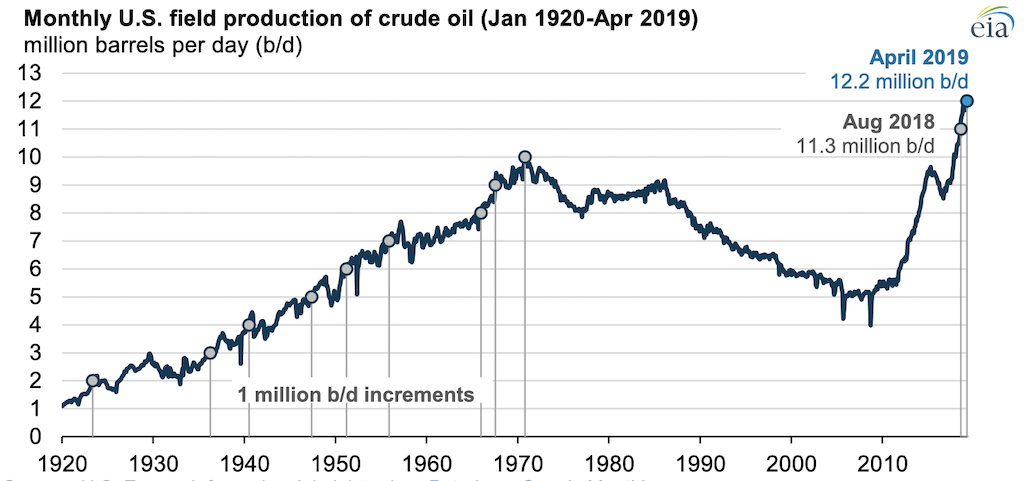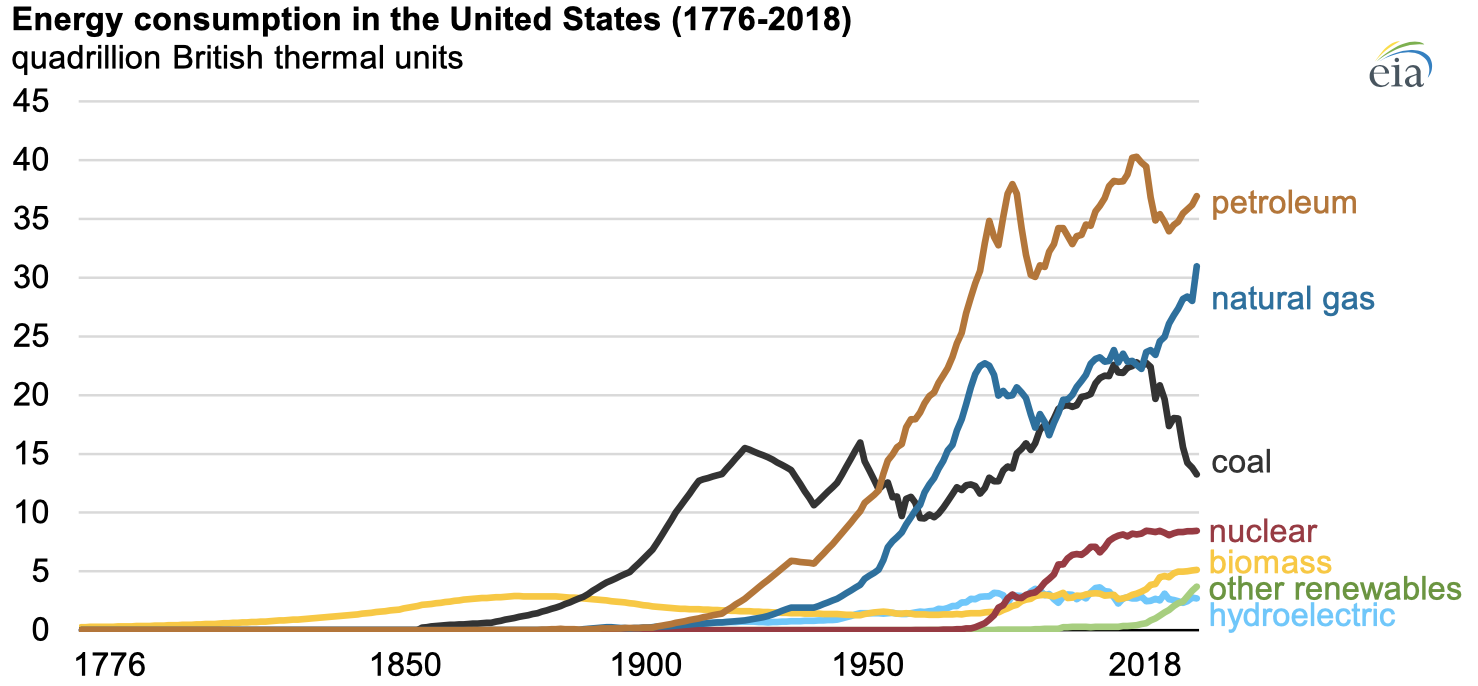U.S. crude oil production and lease condensate reached another milestone in April 2019, totaling 12.2 million barrels per day (b/d), according to EIA’s latest Petroleum Supply Monthly. April 2019 marks the first time that monthly U.S. crude oil production levels surpassed 12 million b/d, and this milestone comes less than a year after U.S. crude oil production surpassed 11 million b/d in August 2018.

Texas and the Federal Offshore Gulf of Mexico (GOM), the two largest crude oil production areas in the United States, both reached record levels of production in April at 4.97 million b/d and 1.98 million b/d, respectively. Oklahoma also reached a record production level of 617,000 b/d.
The U.S. onshore crude oil production increase is driven mainly by developing low permeability (tight) formations using horizontal drilling and hydraulic fracturing. EIA estimates that crude oil production from tight formations in April 2019 reached 7.4 million b/d, or 61% of the U.S. total.
The Permian Basin in western Texas and eastern New Mexico continues to drive record national oil production growth. The Permian’s prolific tight oil plays with multiple layers—including the Bone Spring, Spraberry, and Wolfcamp—make it one of the lower-cost areas to develop. The Permian Basin accounts for about 63% of Texas and 96% of New Mexico crude oil production. From January 2018 to April 2019, Texas crude oil production increased by 1.1 million b/d (28%) and New Mexico production increased by 345,000 b/d (64%).
Despite pipeline capacity constraints, the Permian region’s month-over-month growth averaged nearly 100,000 b/d for almost all of 2018. Industry efficiencies in pipeline utilization and increased trucking and rail transport in the region have allowed crude oil production to continue to grow. In the latest Short-Term Energy Outlook, EIA forecasts that Permian production will average 4.4 million b/d in 2019, a 920,000 b/d increase from its 2018 average.

EIA forecasts GOM production to average 1.9 million b/d in 2019, making this region the second-largest contributor to crude oil production growth from 2018 to 2019. The forecasted growth is driven by 14 new fields brought online in 2018 and 9 new fields expected to come online in 2019. These 23 fields collectively are expected to contribute more than 200,000 b/d of the total 1.9 million b/d of GOM production in 2019.
Principal contributor: Emily Geary

Follow us on social media: